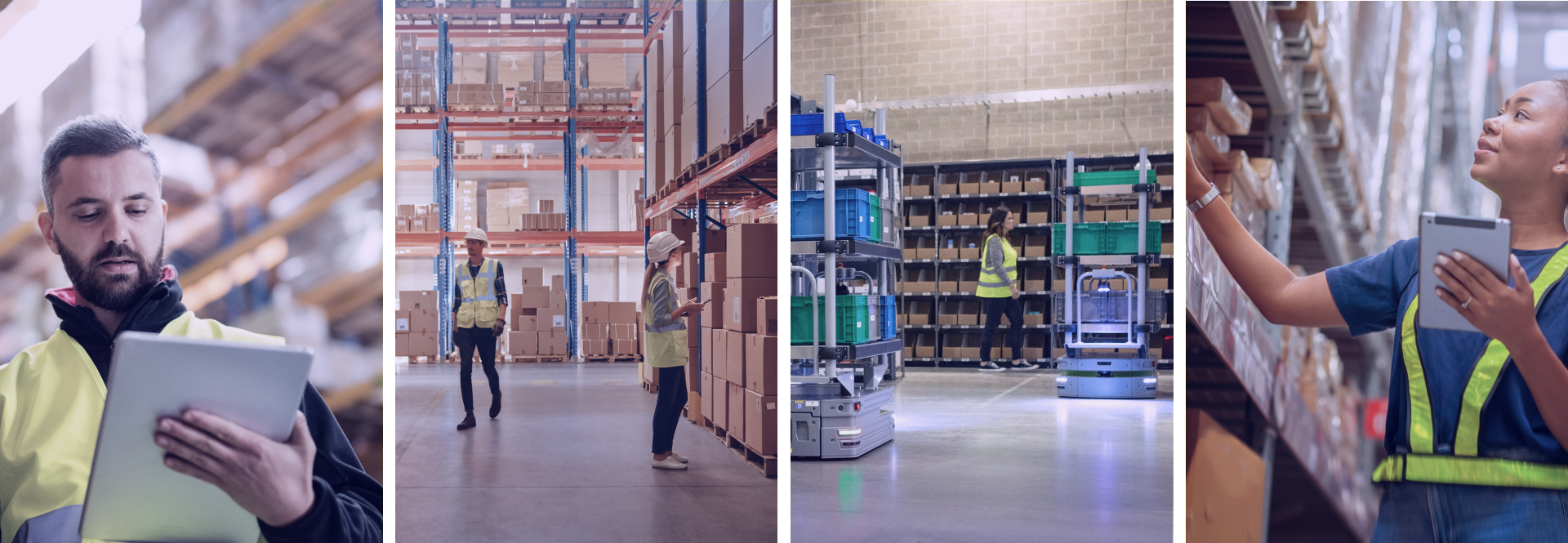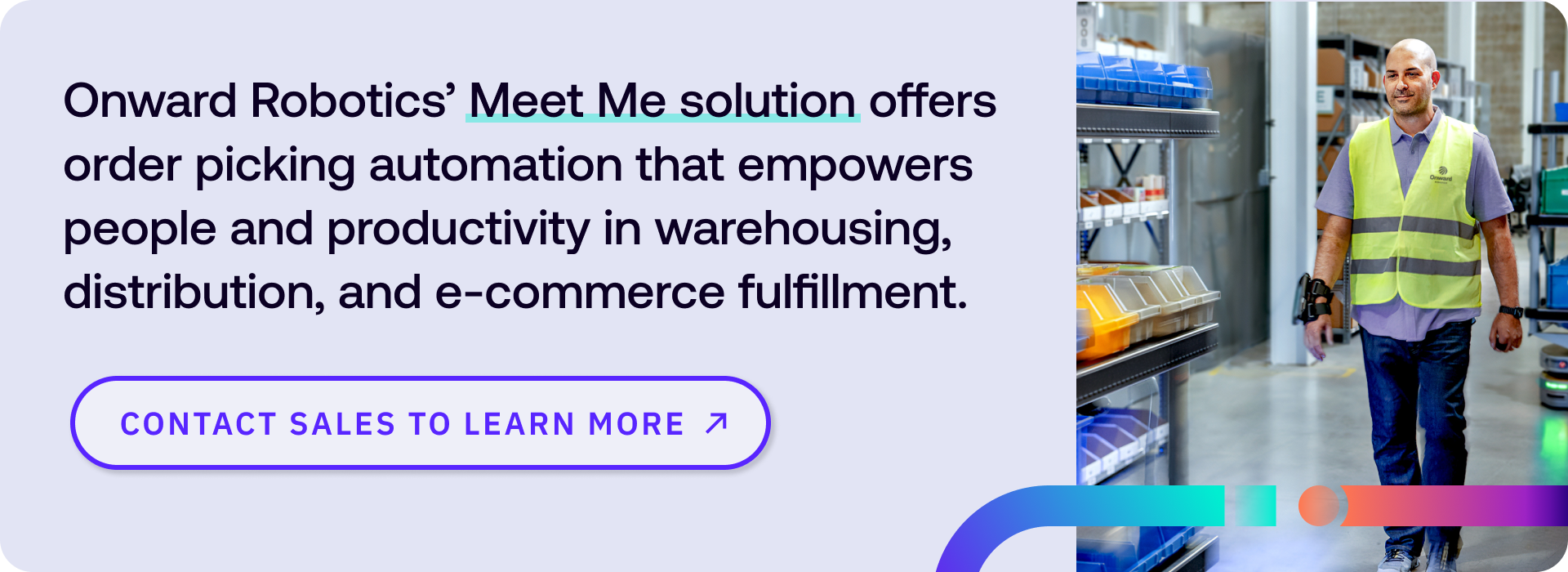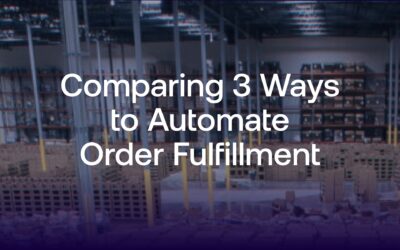4 Warehouse Automation Trends Shaping Fulfillment
Enhance your fulfillment strategy with actionable insights on the latest trends in warehouse automation from supply chain experts

APRIL 16, 2024
Labor shortages, ongoing economic challenges, and the impact of AI are just a few of the issues every fulfillment leader must navigate as they lead their warehouse today and build strategies for operational success in the future. The impact of these external factors can be significant and has leaders within the supply chain looking for ways to build a resilient, proactive strategy to mitigate risk, strengthen operations, and deliver results. Many warehousing, distribution, and e-commerce fulfillment leaders are looking to automation to overcome these challenges.
In this blog we look at current trends in warehousing and fulfillment automation: How are leaders building resilience in their operations? How is technology being used? What implementation strategies are working, and perhaps more importantly, which are not?
Trend #1: Early Adopters Have Learned from Initial Deployments
Ongoing labor and economic challenges combined with increased customer expectations have fast-tracked robotics and automation technology within fulfillment. Gartner recently predicted that 50% of large enterprises will have adopted some form of intralogistics smart robots (ISR) in their warehouse or manufacturing operations by 2028. With a little over 36% respondents in a recent survey confirming they are currently deploying warehouse automation technology, more companies are transitioning from “try” to buy.
As companies gain more experience with automation technology (including how it works in their facility and, importantly, how it works with their workforce), fulfillment leaders are applying what they have learned from initial deployments to refine their search for the “right fit” automation for their operations. They’re analyzing what went well, what didn’t, and what improvements need to be made for future solutions. These insights are filtering into more specific requirements and shaping their definition of automation success.

Previous experience with automation, paired with more scrutiny around cost and budget, has caused fulfillment leaders to become more discerning about the projects and partners they take on. According to IOT World Today, demonstrating true value and short-term impact to the business is becoming more of a requirement for leaders to justify investment and the opportunity for failure is limited. Choosing the right partner, technology, and solution for your business has never been more crucial to achieving the rewards that fulfillment warehouse automation offers.
Trend #2: Organizations are Maximizing the Value of Existing Infrastructure and Labor
The high cost of capital has more businesses focusing on optimizing the value of existing fulfillment space and talent, as supply chain thought leader and industry analyst Luther Webb recently highlighted. Analysis of warehouse construction also shows a 25% slowdown in the number of new warehouses being built in the US and Europe in 2023 compared to 2022, according to Interact Analysis, as companies reinvest in existing space instead of building new facilities.
Although investment has slowed in new warehouse construction, the demand for mobile robots continues to grow. Implementing automation in an existing facility and operational workflow doesn’t come without its challenges: investing in automating brownfield fulfillment facilities demands that technology must adapt to and boost an operation’s existing capabilities.
Optimizing existing infrastructure, systems, and labor is key in today’s economic climate. Using lean methods including identifying and reducing waste in the fulfillment workflow and collaborating with employees to identify areas for opportunity will streamline throughput and increase collaboration as new robotic technology integrates into existing operations.
Trend #3: Optimizing Human and Robot Travel Independently Leads to Increased Efficiency
Reducing waste in order picking focuses on wasted motion, talent, and time: ultimately leading to decreased productivity and throughput and increased cost. In older models of person-to-goods (P2G) order fulfillment, traditional workflow orchestration has required the picker to find or follow the autonomous mobile robot (AMR), with human workers dependent on robots to initiate and complete their next pick.
In the swarm or “find me” AMR model, pickers are required to find and select a robot that has work available, typically indicated by a flashing light or color on the tablet attached to the robot. This older model increases the robots-to-people ratio to compensate for fulfillment process inefficiencies but doesn’t add any intelligence or optimization to the process. In a fast-paced, busy, and already congested warehouse this influx of swarming robots can cause confusion, increase traffic, and add time to end-to-end order completion.
Onward Robotics’ unique Meet Me model offers a different approach: technology decouples and directs the work of pickers and robots, treating each as independent agents of the overall system. Proprietary technology optimizes the travel paths of each, allowing for increased capacity and flexibility to move more, more efficiently, without having to purchase hundreds of robots to surround employees.
Trend #4: Robots Should Make Your People’s Lives Easier
To be successful, all mobile automation projects in warehousing, distribution, and fulfillment must empower and enable the humans it works alongside. With a turnover rate of over 46% in the warehousing industry, according to the US Bureau of Labor Statistics, technology needs to be simple and intuitive not only for existing employees, but for new and future employees as well.

It takes approximately 12 weeks for a new warehouse employee to reach full productivity levels, according to Zippia. Automation technology should enable and speed up the onboarding process, not add to it. Technology such as the put-to-light shelving on Onward Robotics’ Lumabot AMRs provides a familiar process for experienced pickers and an easy-to-learn and use method for those just joining the team. Augmenting the human workforce with easy to use mobile robotic automation can not only save valuable training time, but also reduce uptake time to reach optimal productivity.
From “Key Trends” to Your Game Plan
Introducing or growing automation in fulfillment warehouses offers operational leaders the labor support and boost in productivity they need to compete. As leaders have more experience with implementation and usage in their fulfillment warehouses, mobile robotic automation continues to prove itself as a strategic lever that can offset the challenges fulfillment warehouses face today and tomorrow. Selecting the right partner and technology to get the right fit for your business’ operational needs is pivotal to realize your operational goals and ROI.



